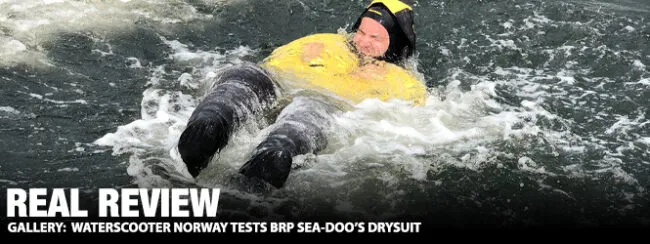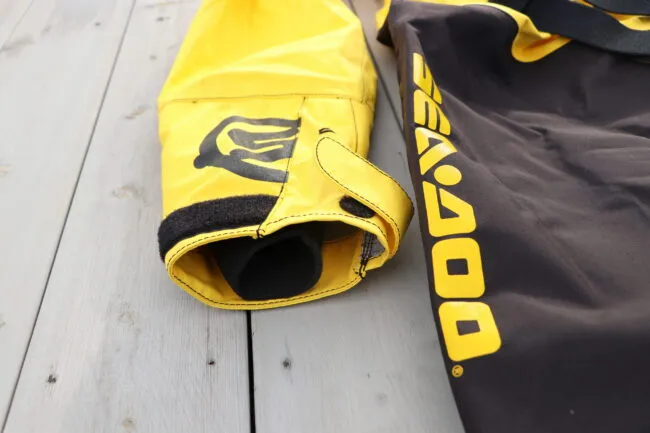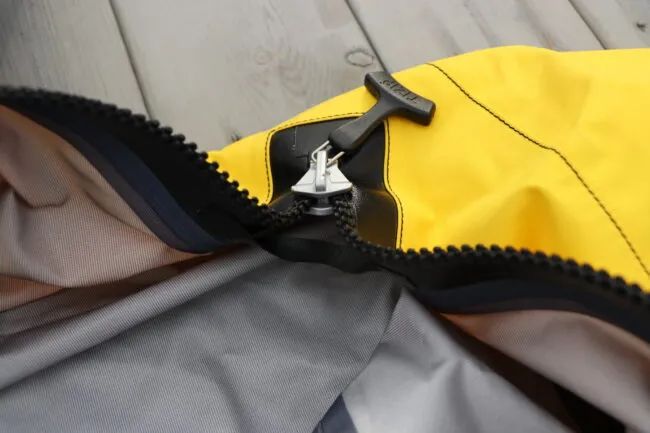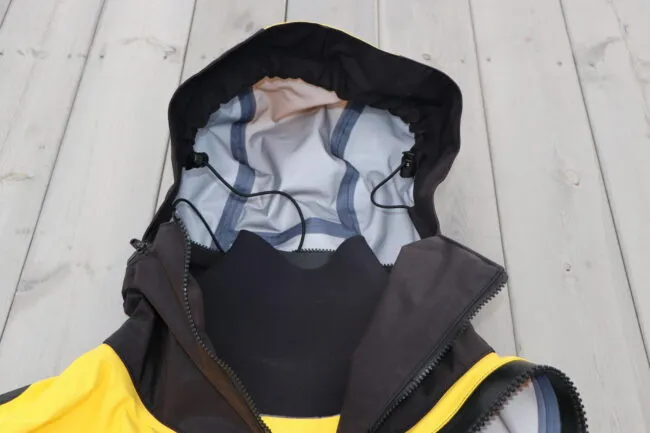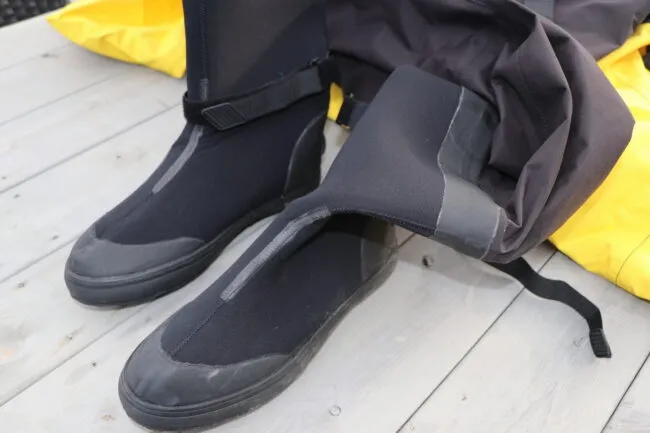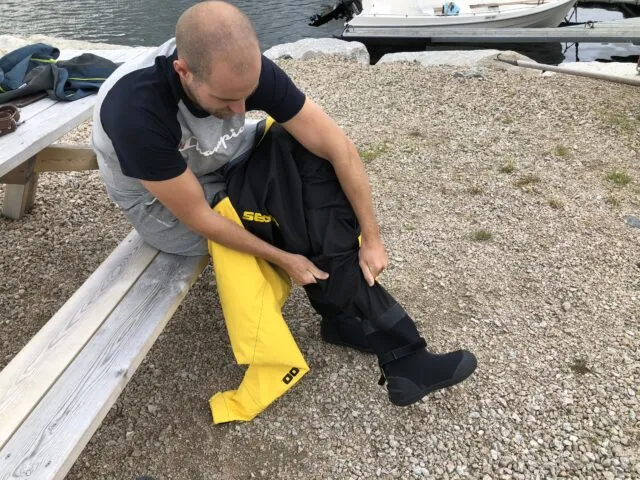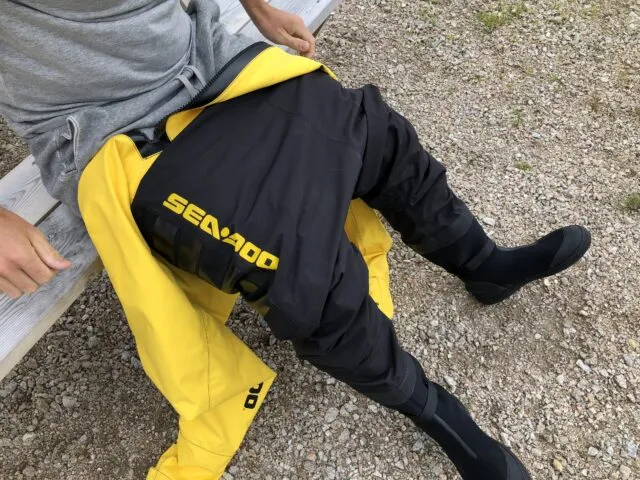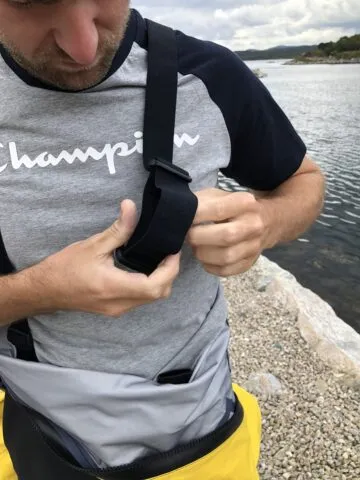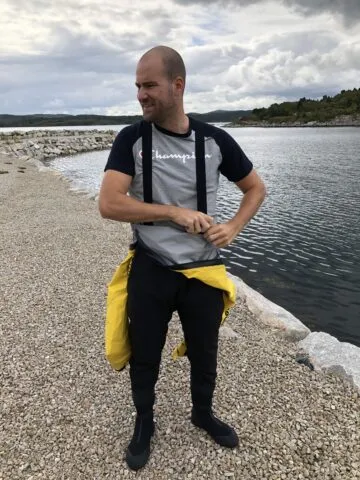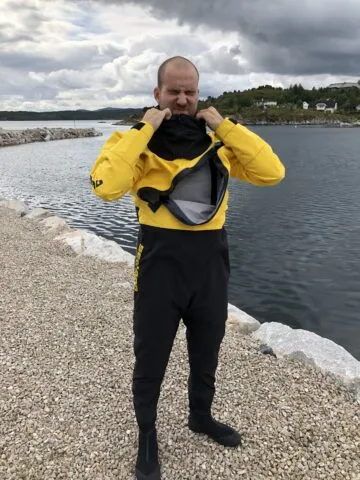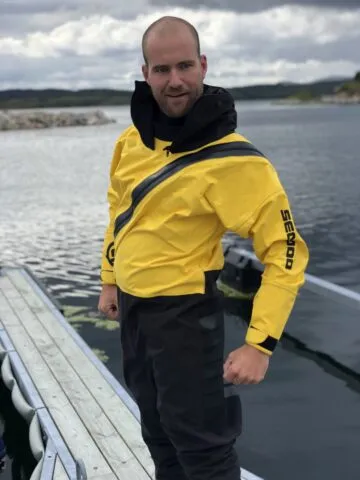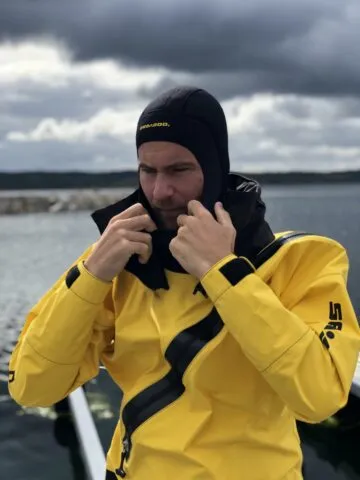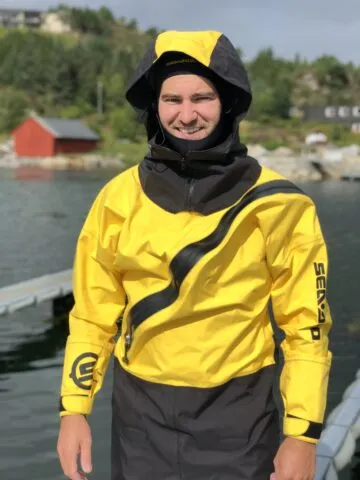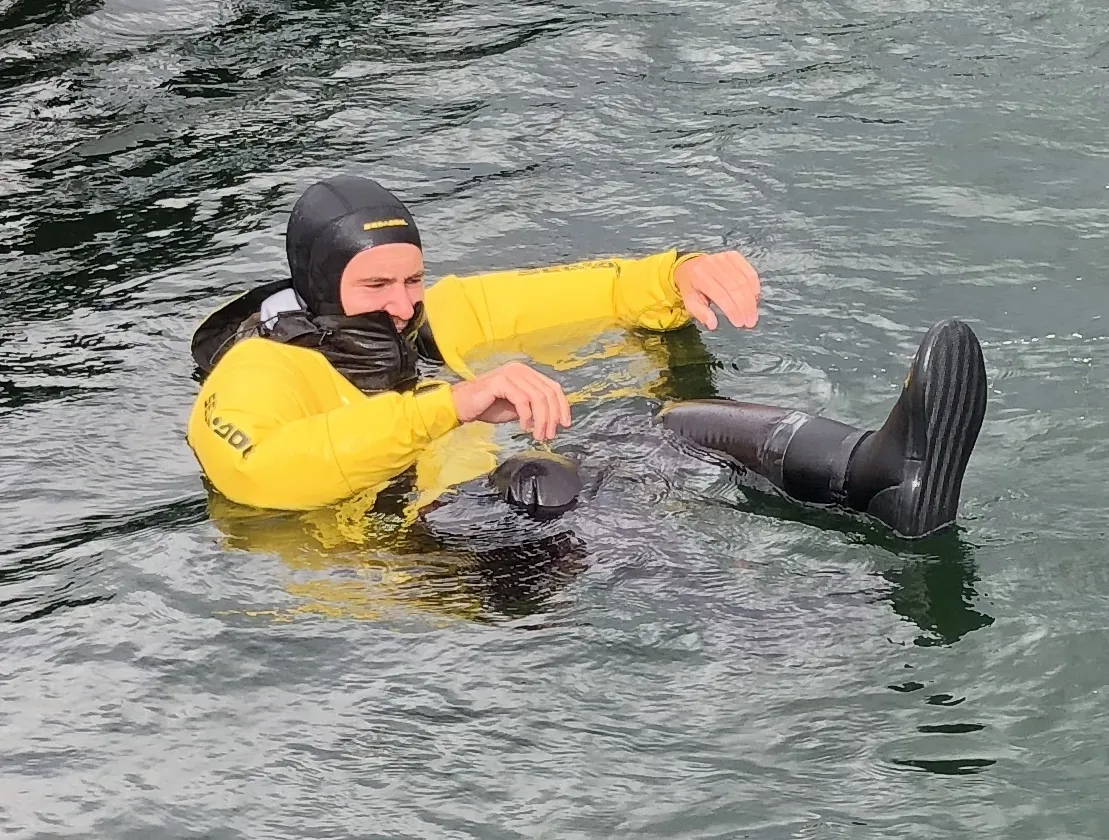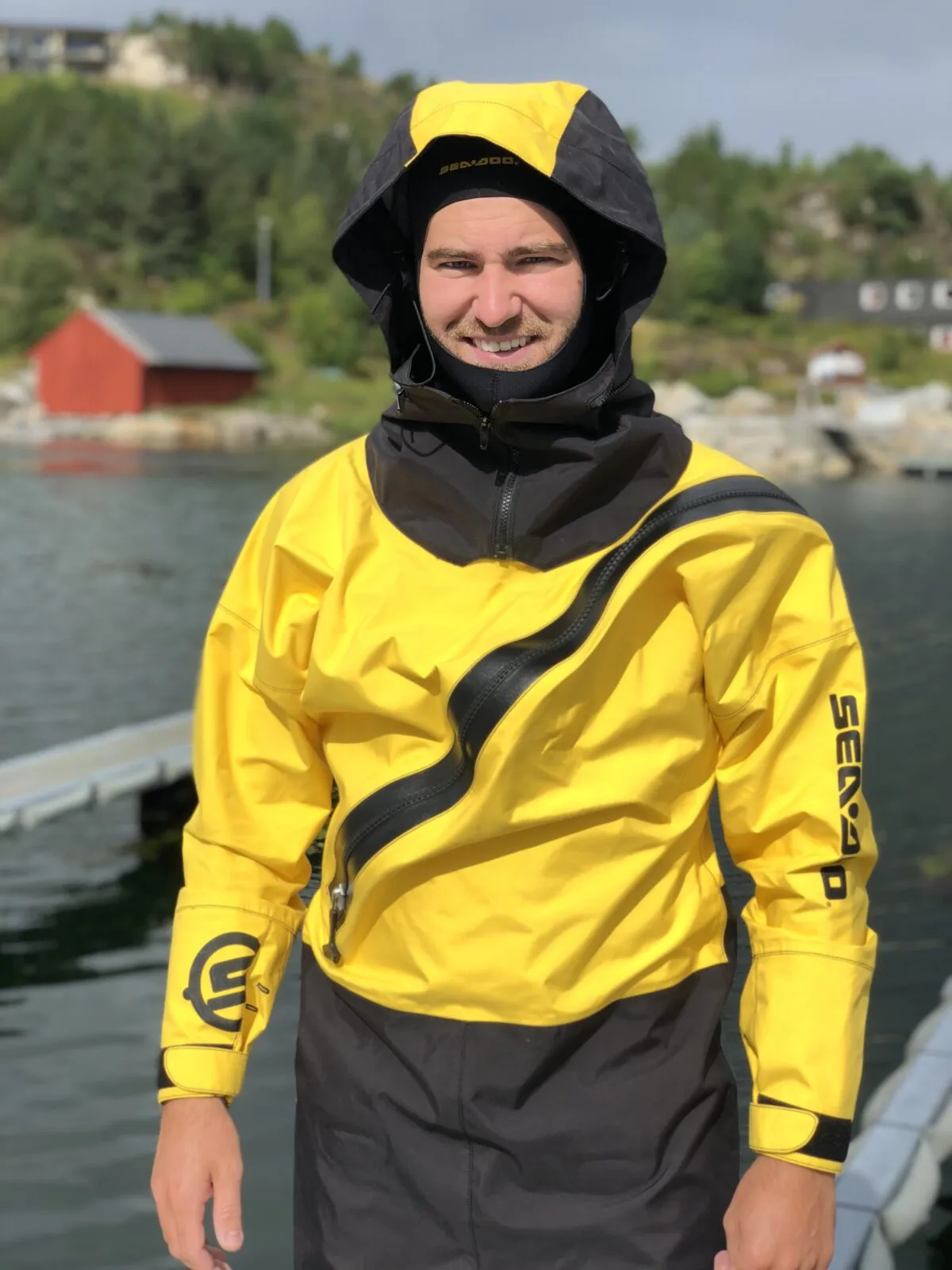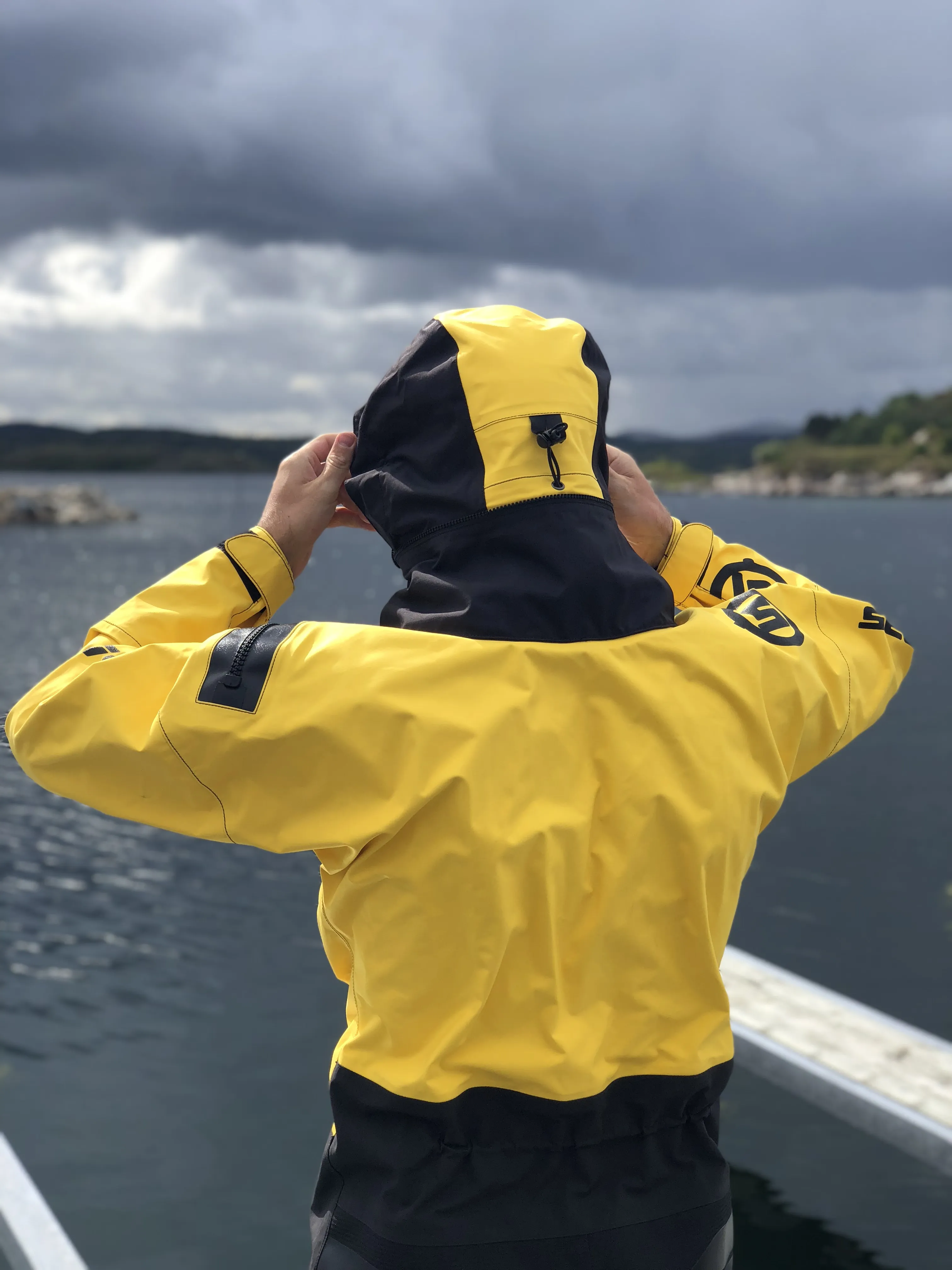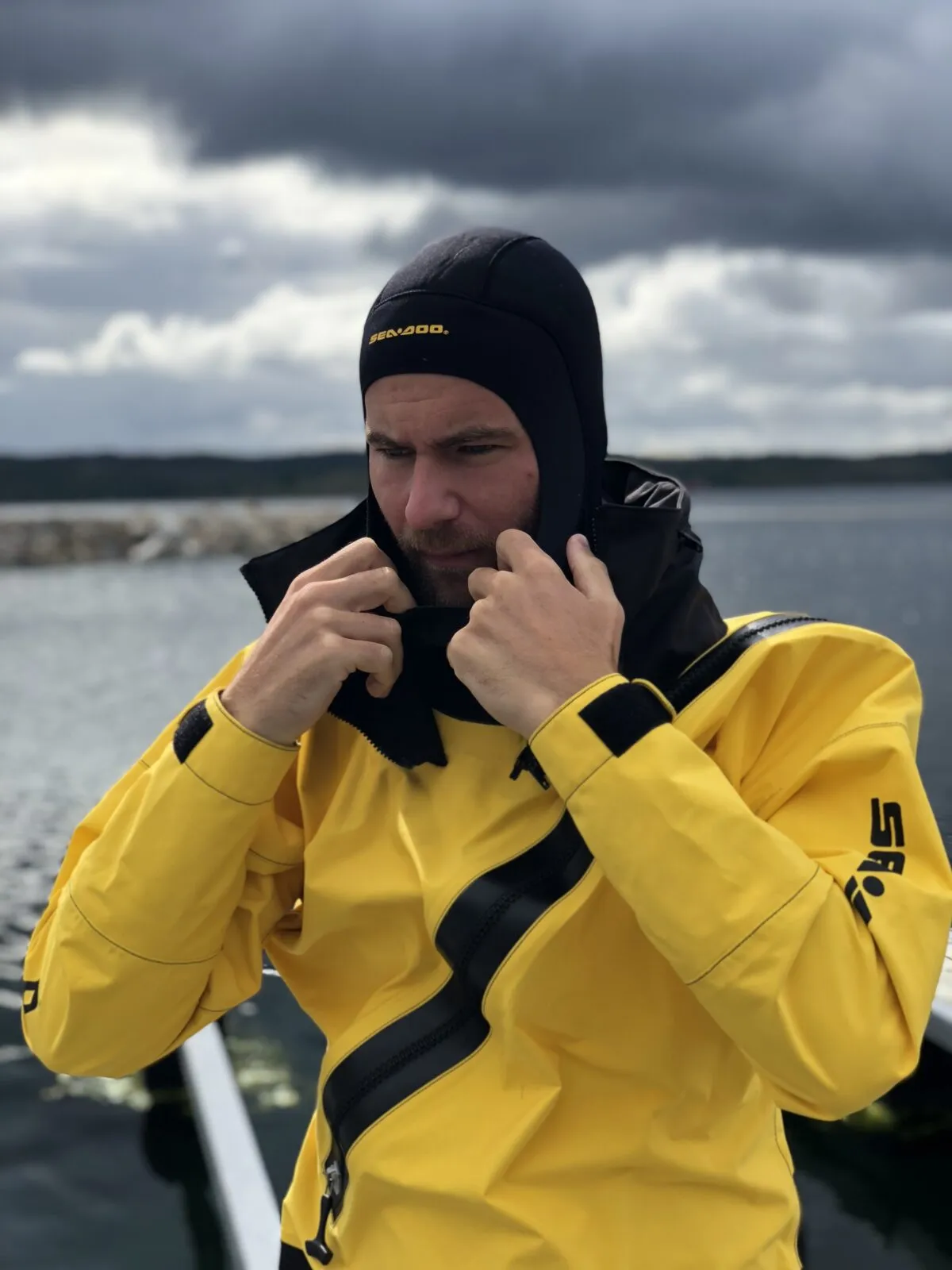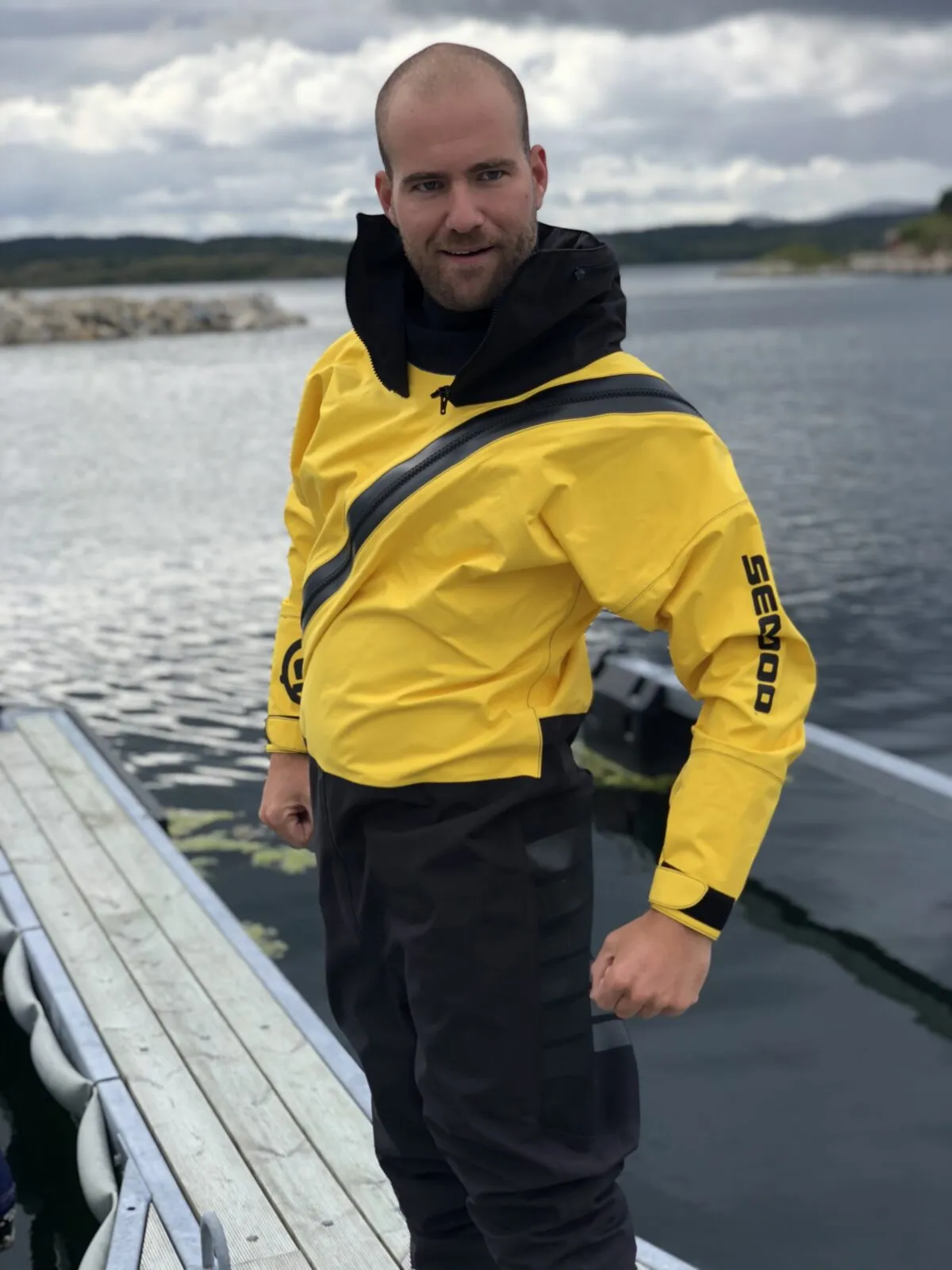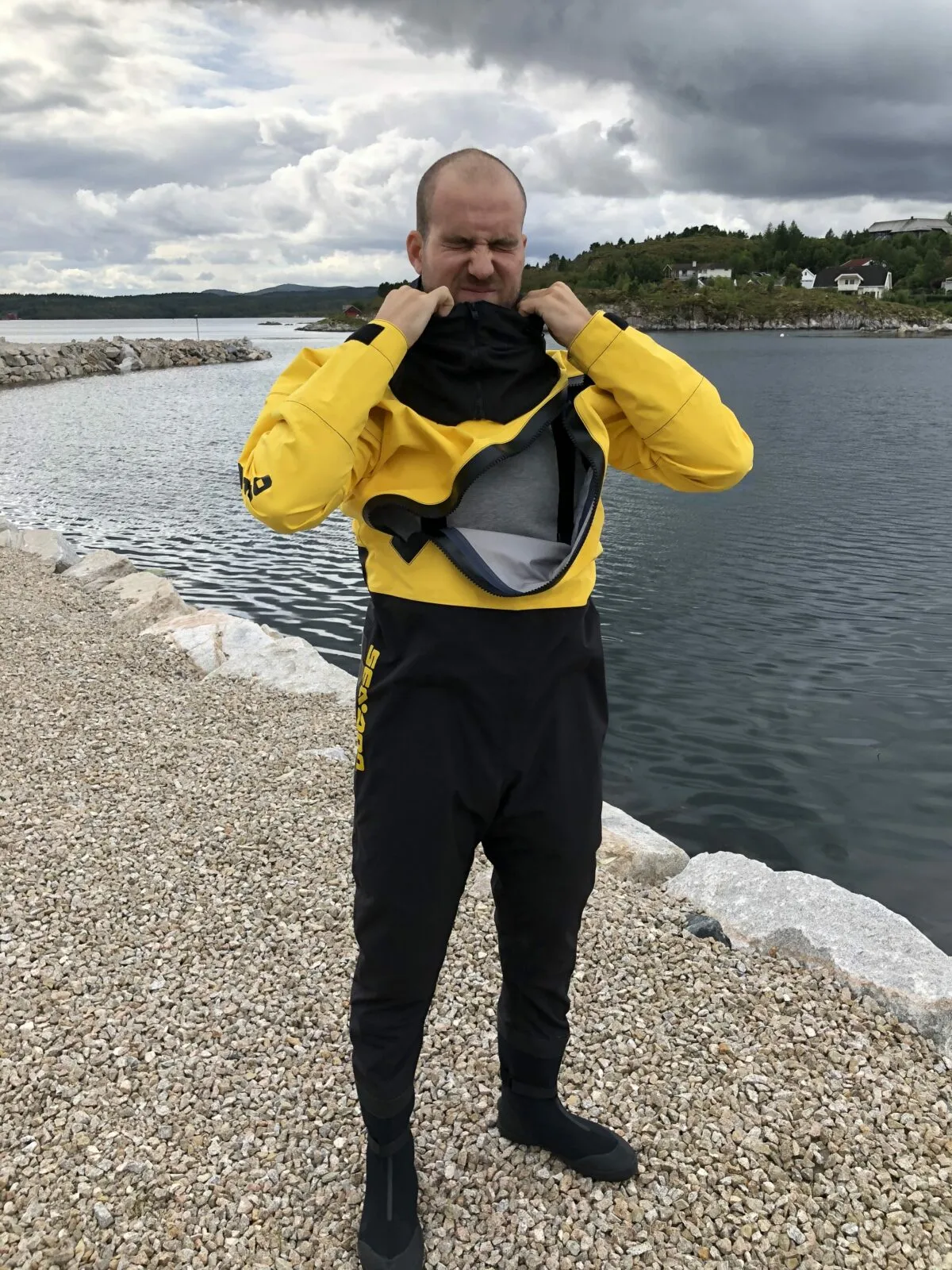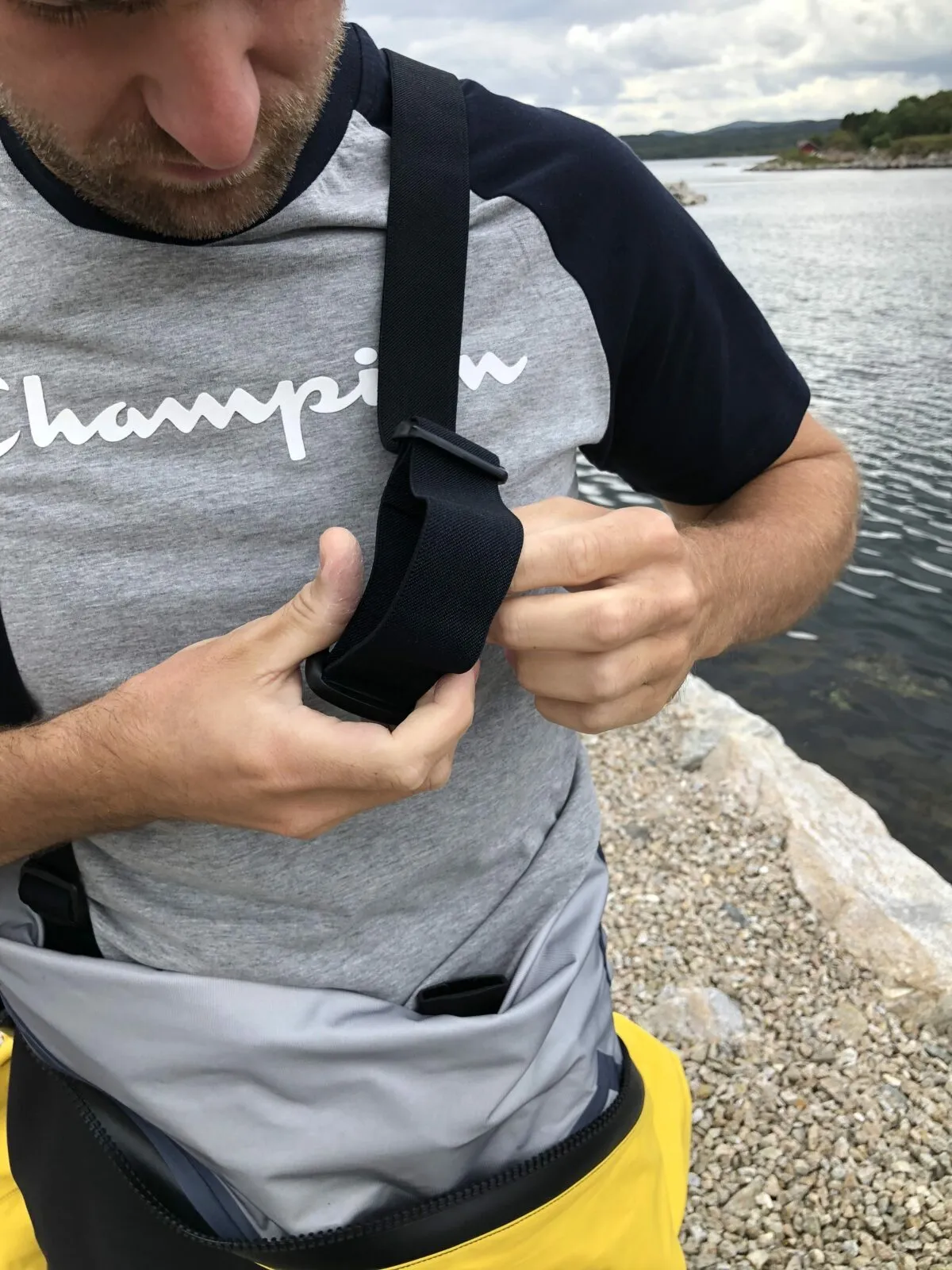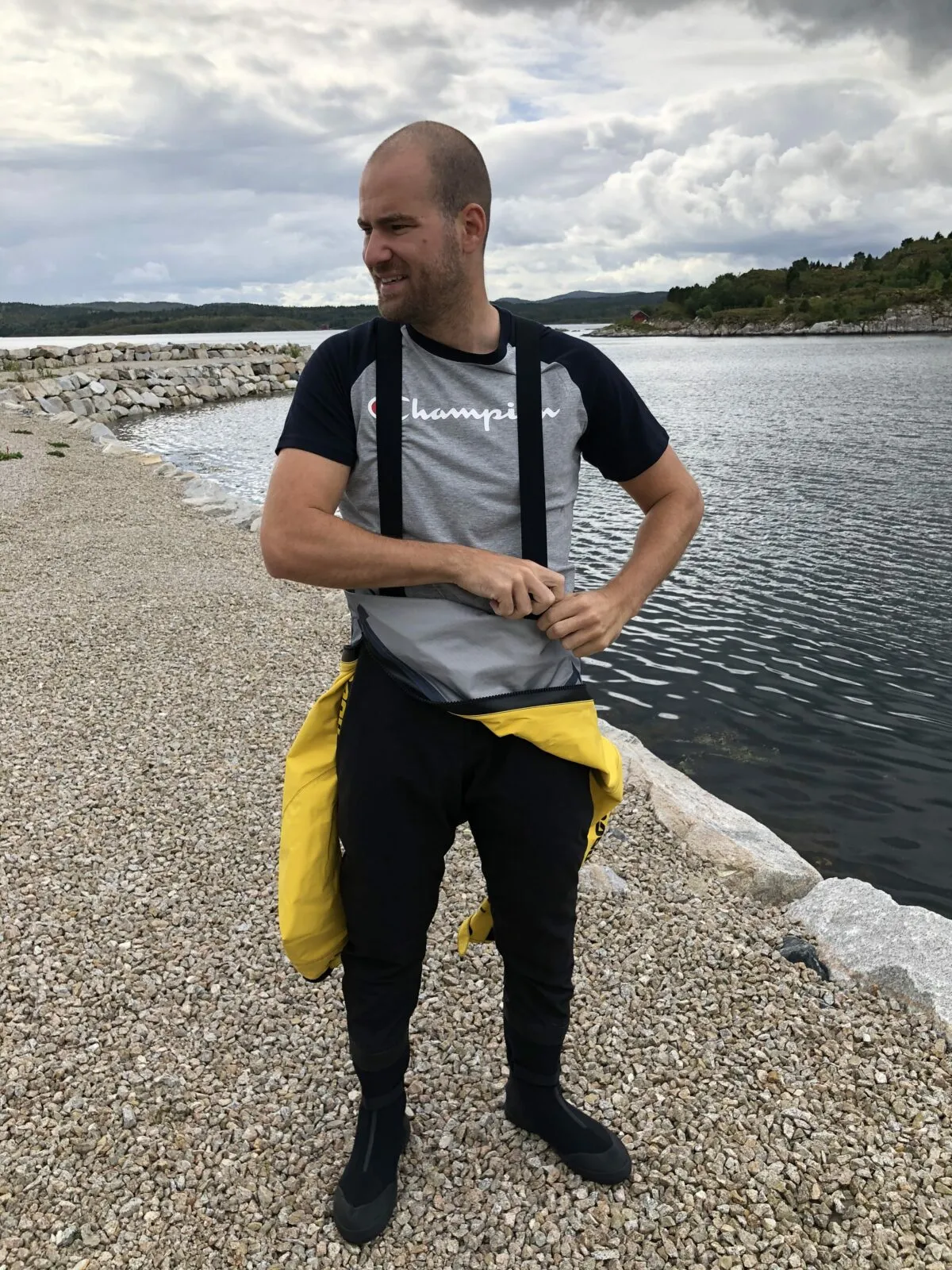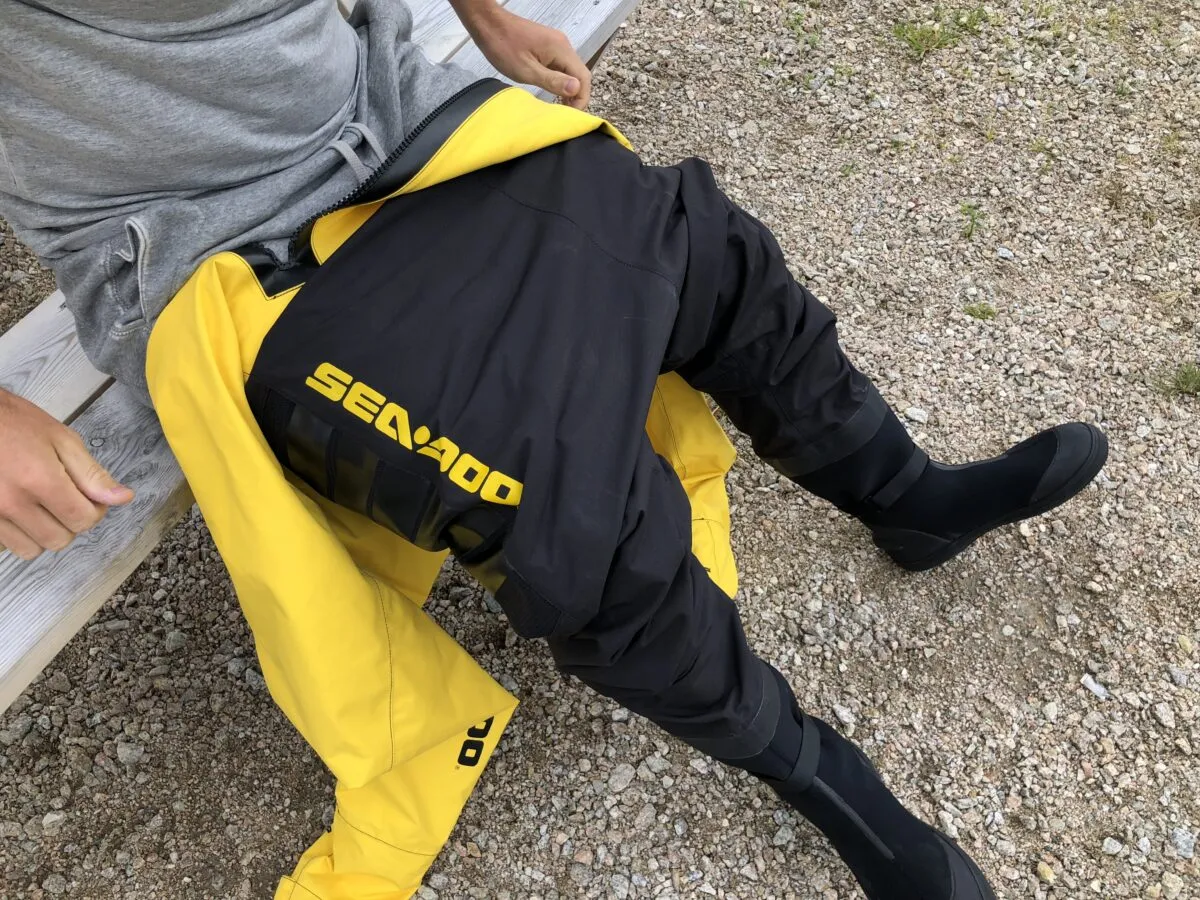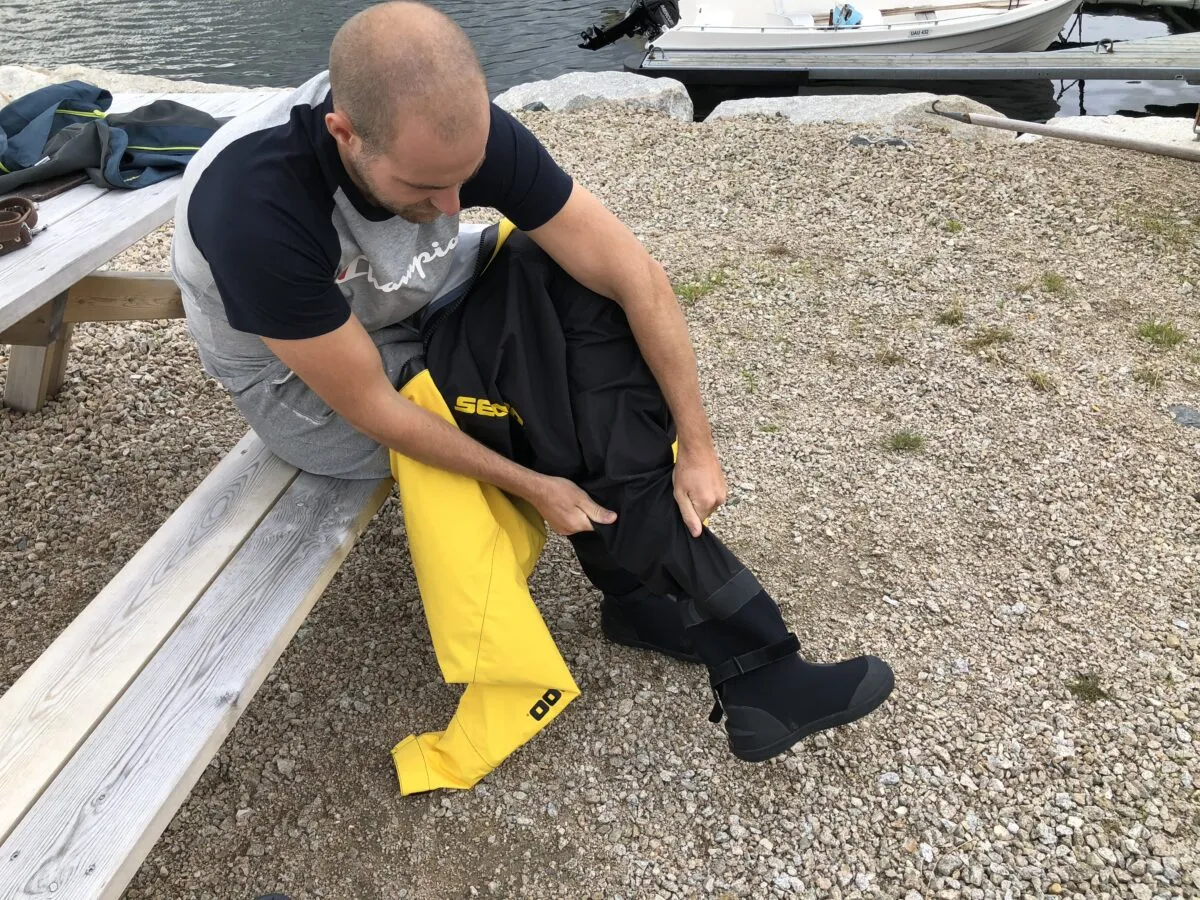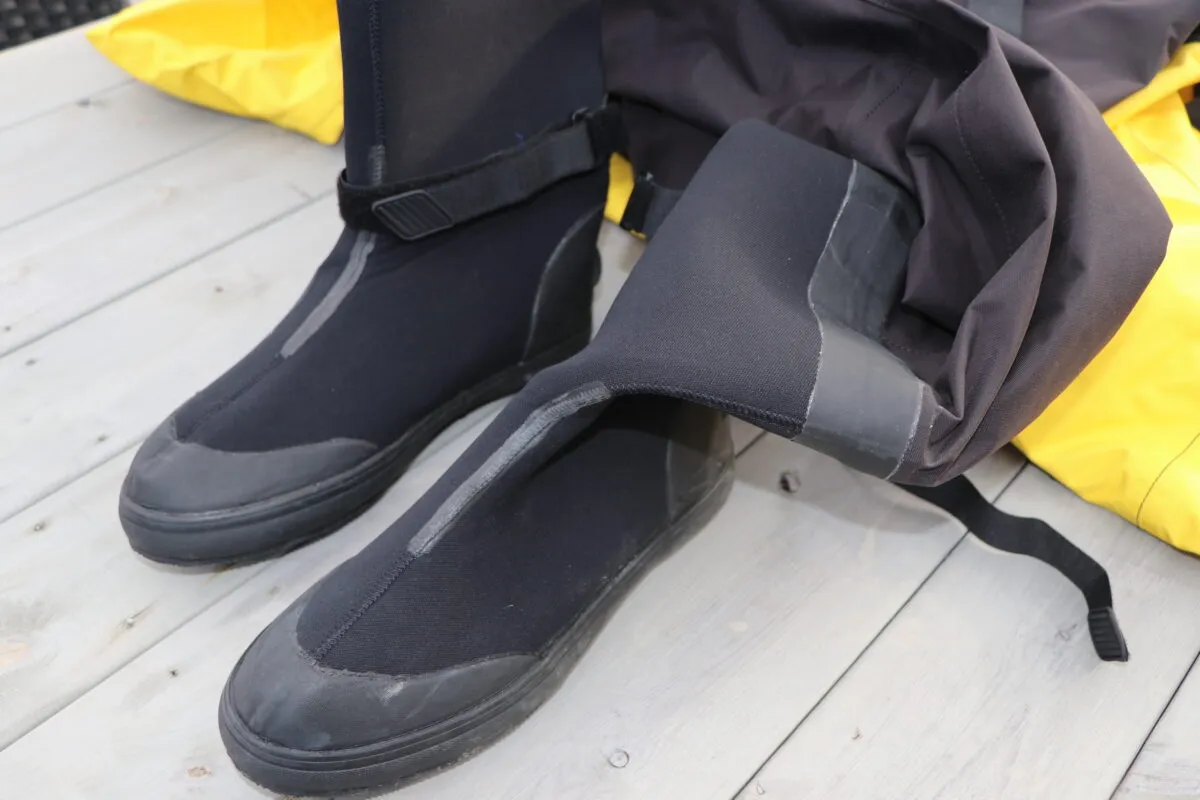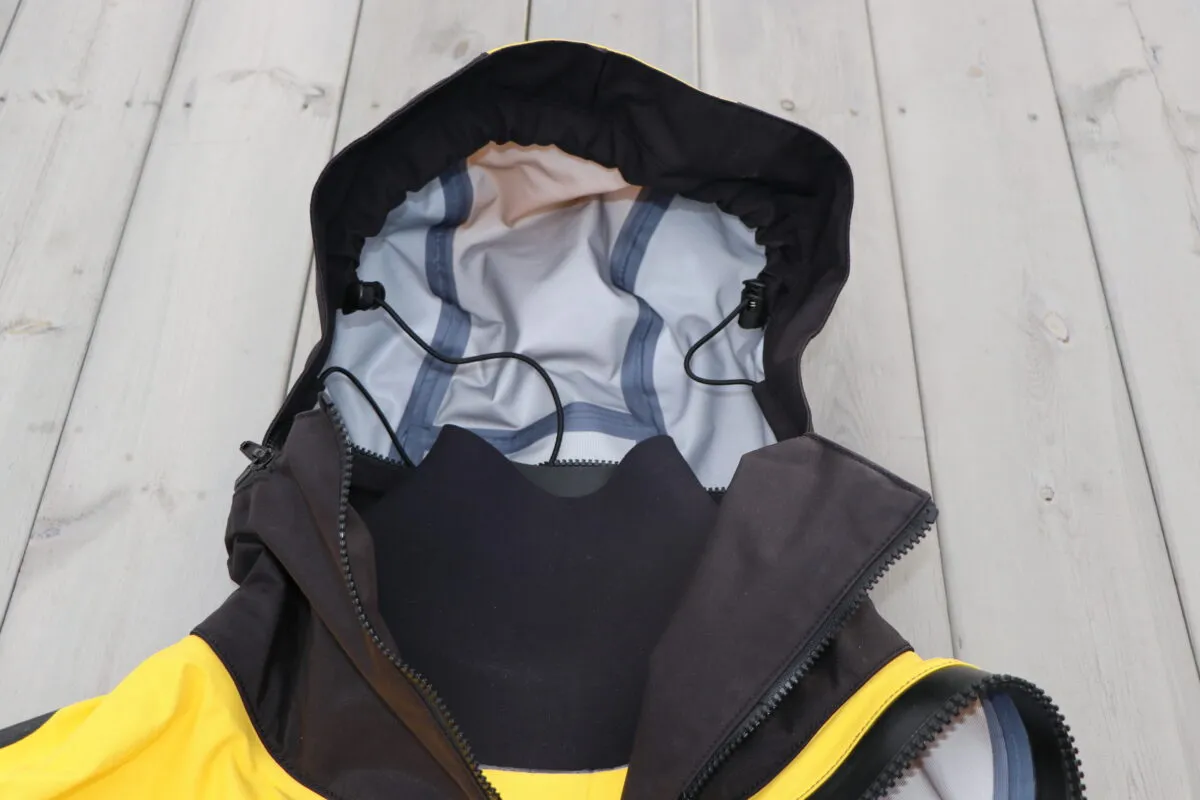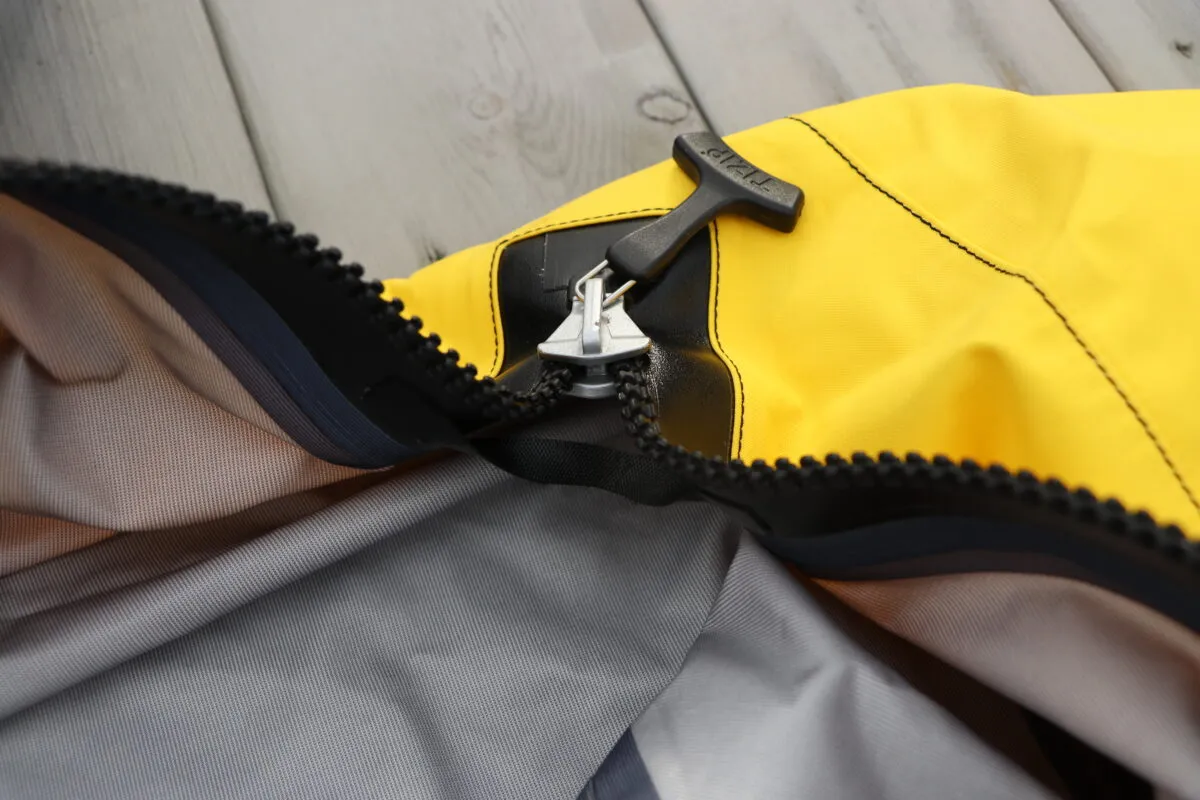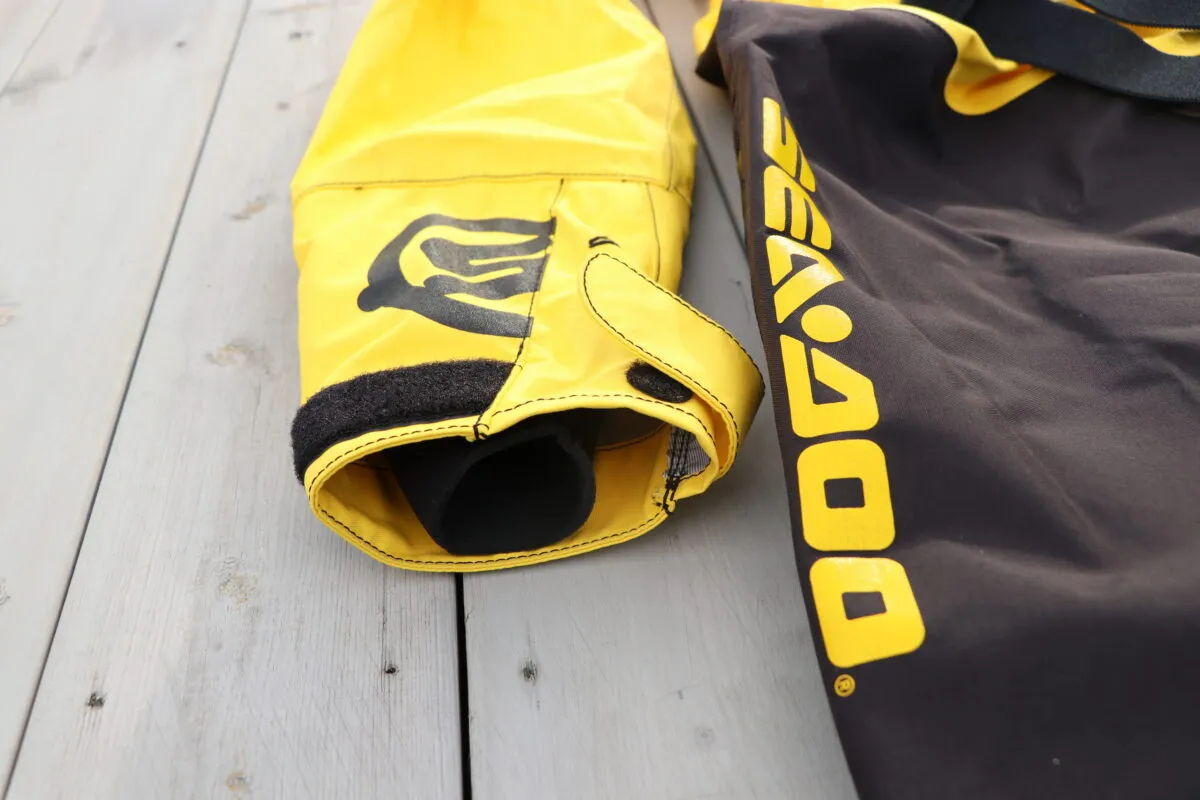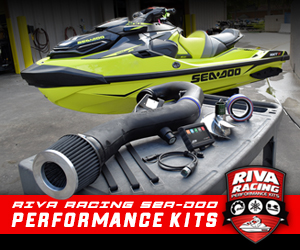The fact that Sea-Doo has not had a dry suit is not all that strange. The proportion of watercraft drivers who ride only when it’s sunny out versus all-year-long must be considered; and that investing in both a wetsuit and a dry suit constitutes a significant cost. The market for the sale of dry suits is therefore perhaps not the largest. But since it increases the possibility of using a watercraft, a dry suit should also be a natural part of the range for all the major watercraft manufacturers as we see it.
With a good dry suit you will keep the winter’s limitations at a distance, both in the spring season but perhaps especially in the fall while the water temperatures are still at their highest while the air becomes colder. And as mentioned, longer trips with varying weather or simply gray days will be far more relevant for several people. Finally, Sea-Doo is now out with a self-developed dry suit. The suit is available through the central warehouse the first week of April, and will probably be ready with the country’s dealers before Easter – according to BRP Norway AS. The suit will initially be sold in Europe.
The new Sea-Doo dry suit is available only in yellow and black, cool for those who like yellow. And yellow is ideal if one wants to be seen well on or in the water. So, if you put security in front of the color scheme for Sea-Doo is therefore an advantage all the way. If you choose a dry suit, your comfort and safety is something you prioritize.
Before we got to test the Sea-Doo dry suit, BRP had already shown the suit earlier in Norway and Scandinavia, but did not go public with the product until now. This is mainly due to inertia around the decision on design and final production, and we have therefore not even given information about the suit until today. The work on developing the new dry suit actually goes back over 3 years, according to BRP. Let’s take a closer look at what Sea-Doo has to offer features at a suggested retail price of $7990 kr ($860 USD).
The suit’s long and durable zipper with a wide opening was one big plus; nothing is more frustrating than having to fight into the suit to get your arms and head in. The zipper was somewhat twisted too close when it was completely retracted; it also bunched up occasionally in a small relief hood at the top. We resolved the issue with a little zipper wax we had.
Like most dry suits, Sea-Doo also has suit braces. The belts seem to be of good quality and are not marked while driving. The tension is easy to adjust, and the buckles do not come off or gnaw during driving. The buckles seem to be of good quality, and it will surprise us if these turn out not to last over time.
The suit contains a firmly integrated hood, which contributes to the collar being relatively dominant and thick. As the suit is designed, the cap works excellently both coiled and unrolled over the head. It is also easy to pull out and roll together, even with 3mm gloves. At speeds above 35-40 knots, it quickly became clear that one is better off using a neoprene hood or helmet, rather than pulling the cap over the head. When used with a helmet, it pushes the collar slightly, and frustratingly towards the underside of the helmet. Since we often drive with just a helmet, this is one minus point for us, but most of the people probably will run with a neoprene hood and glasses, and with that combo the hood and collar work wonderfully. (It’s also worth noting is that the neoprene cap from Sea-Doo is sold separately, the same applies to their new type of neoprene gloves, price and info about these we will return to.)
The suit has solid neoprene cuffs in both the neck and arms; the seams appear strong. Especially the seams and the strength of the arm cuffs are important to us, as these are heavily stressed when taking the suit off and on repeatedly. More than once, we have broken cuffs on our other suits, and that is something you do not want. As expected, the suit and the fabric can withstand water. Our tests from both quayside and watercraft show that the men’s suit remains watertight. Removing air from the suit is also unproblematic, both on land and in the water. All in all, we found only positive experiences here.
Sea-Doo has chosen to go for integrated shoes, than with fixed shoe sizes adapted to the different suit sizes. That shoes are included in the price naturally adds value, and who does not like to get the most for the money? The downside is whether your shoe sizes do not match the suit size. We are a little surprised that BRP chose this rather than a latex sock or pure cuff as most other manufacturers do. This gives greater freedom of choice for one’s own footwear. The shoes themselves worked well; there was room for thick socks. The shoes are noticeably a bit more clumsy than the neoprene shoes we use for our other dry and wet suits. All in all, the shoes work well and help defend the price of the suit.
Unlike several of our dry suits, the Sea-Doo suit has glued areas with anti-slip material in the seat. In contrast to, for example, the Gecco grip that we have on our Jettribe wet suits, probably these fields do not provide just as good attachment. But compared to dry suits completely without anti-slip on the butt, the Sea-Doo solution surprises well, not too little and not too much. It should also be added that the suits are relatively spacious and there is more than enough fabric in the longitudinal direction so that one is not affected by driving in a sitting position, even with a lot of warm clothes underneath.
In addition to what has already been mentioned, the only thing we have to critique on the suit is that it lacks a zipper in the crotch, something we mentioned to BRP last year, but were unfortunately too late in this process. BRP Sea-Doo has not revealed the dry suit yet, but the selection is now expanded and you do not have to look for dry suits for kayaks and kiters. The Sea-Doo suit goes a little higher on the price list than the very popular Crewsaver Cirius suit, but quite in line with most others. Is it worth the price of 7990 kr? ($860 USD) Yes, as long as it fits you in size of suit and shoes.
[This article was originally written by Christian Hammernes for Waterscooter Norway March 9th, 2019; and has been translated, edited and condensed by The Watercraft Journal. You can read the original publication in its entirety here.]





